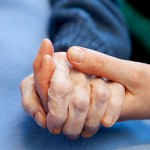In Canada, strokes are a leading cause of hospitalization among seniors. With nearly 80% of strokes affecting people over the age of 60, retirement homes must be well-prepared to respond quickly and effectively. Families choosing a retirement residence for a loved one want assurance that the facility is equipped to handle medical emergencies—especially strokes, where every second counts.
 Why Speed Matters in Stroke Response
Why Speed Matters in Stroke ResponseThe outcome of a stroke depends heavily on how quickly it is recognized and treated. In many cases, the damage can be minimized—or even reversed—if medical intervention occurs within the first three hours. Retirement homes must therefore have clear, fast-acting procedures in place.
Common signs of a stroke include:
Ask questions regarding retirement homes to our experts
Retirement homes are not hospitals, but many provide enhanced care and operate in close coordination with emergency services and local healthcare providers. Below is a table outlining standard stroke emergency procedures:
| Emergency Response Step | Description | Timing |
|---|---|---|
| Recognize Symptoms (FAST) | Staff trained to spot signs: Face drooping, Arm weakness, Speech difficulty, Time to call 911 | Immediately upon symptom onset |
| Call 911 | Emergency services are contacted without delay | Within the first 1–2 minutes |
| Notify Family | Next of kin or emergency contact is informed | As soon as emergency services are on the way |
| Prepare Medical History | Staff gathers resident’s records, medication list, and advance directives | While awaiting ambulance arrival |
| Follow-Up Care Plan | After hospitalization, home coordinates post-stroke care or rehabilitation | Upon return or transfer |
Retirement homes in Canada typically employ personal support workers (PSWs) and registered practical nurses (RPNs) who receive training in:
Some higher-care retirement homes offer 24/7 nursing staff and collaborate with local hospitals to ensure faster triage and follow-up care.
Modern retirement homes often invest in emergency alert systems, including:
Once a stroke has been treated at the hospital, the role of the retirement home becomes crucial in supporting rehabilitation. Post-stroke services may include:
Residents may be temporarily transferred to a higher-care facility and return once stable.
Before selecting a retirement residence, families should inquire about:
How do retirement homes in Canada respond to stroke emergencies?
Staff are trained to recognize stroke symptoms quickly, call 911 immediately, alert families, and prepare medical documentation while awaiting EMS.
Do all retirement homes have medical staff on-site?
Most have PSWs and RPNs, but staffing levels vary. Some offer 24/7 care, while others rely on external services. Always confirm staffing in advance.
Are retirement homes equipped to treat strokes?
They do not treat strokes but are trained to respond quickly and coordinate with emergency medical services. Stroke treatment occurs in hospitals.
What should I ask a retirement home about stroke emergency procedures?
Ask about training, emergency protocols, call systems, local hospital partnerships, and how care transitions are managed after hospitalization.
Is stroke rehabilitation provided in retirement homes?
Some offer in-house or visiting therapists. Others work with external rehab providers. Services may include physical, occupational, and speech therapy.
How fast is the emergency response in retirement homes?
The best homes initiate action within minutes. The proximity to hospitals and the efficiency of the call system influence overall response time.
Can stroke survivors continue living in a retirement home?
Yes, if their care needs align with the home’s services. More complex cases may require a transition to a long-term care facility.
Stroke emergencies require a fast, organized response—and retirement homes across Canada are increasingly prepared to handle them. From early symptom recognition to emergency coordination and post-stroke care, well-trained staff and robust systems make retirement residences a safe environment for seniors at risk. Families should evaluate each facility’s preparedness carefully to ensure peace of mind and the best possible outcomes for their loved ones.
Don't hesitate to contact us at 343 309 5289 or online. We can help you choose the right establishment for you and assist you in your search.

Find a suitable senior residence